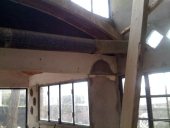




Currently living at the https://oldwatermill.wordpress.com/
 1
1




 1
1




I make a Maple Syrup instructional movie! Check it out HERE
SKIP books, get 'em while they're hot!!! Skills to Inherit Property
See me in a movie building a massive wood staircase:Low Tech Lab Movie




Currently living at the https://oldwatermill.wordpress.com/




My opinions are barely worth the paper they are written on here, but hopefully they can spark some new ideas, or at least a different train of thought








frank li wrote:Very informative article on the subject. I know a guy who loses half or more of the heat generated by his outdoor boiler..... no insulation on the building foundation perimeters (heated slabs) and hundreds of feet of fluid lines on 24/7 circulation.
https://woodstoves.net/blog/post/underground-insulated-pipe




Travis Johnson wrote:
frank li wrote:Very informative article on the subject. I know a guy who loses half or more of the heat generated by his outdoor boiler..... no insulation on the building foundation perimeters (heated slabs) and hundreds of feet of fluid lines on 24/7 circulation.
https://woodstoves.net/blog/post/underground-insulated-pipe
I honestly think the outside wood boilers were one of the silliest things ever invented. My father bought one, and he was a slave to it. Harsh words until you realize he was either trying to find wood for it, hauling wood to it, cutting wood up for it, or putting wood in it. Then rinse and repeat. It was stupid...then the darn thing burned his house down.




I make a Maple Syrup instructional movie! Check it out HERE
SKIP books, get 'em while they're hot!!! Skills to Inherit Property
See me in a movie building a massive wood staircase:Low Tech Lab Movie




jeroen joosse wrote:
Does anyone know/have experience with insulation for hot water pipes and if it would be possible to get hot water inside after running 15 meters outside(in an insulated pipe)?
![Filename: images.jpg
Description: [Thumbnail for images.jpg]](/t/93772/a/66460/images.jpg)

|
Stop it! You're embarassing me! And you are embarrassing this tiny ad!
The new purple deck of permaculture playing cards
https://www.kickstarter.com/projects/paulwheaton/garden-cards
|




